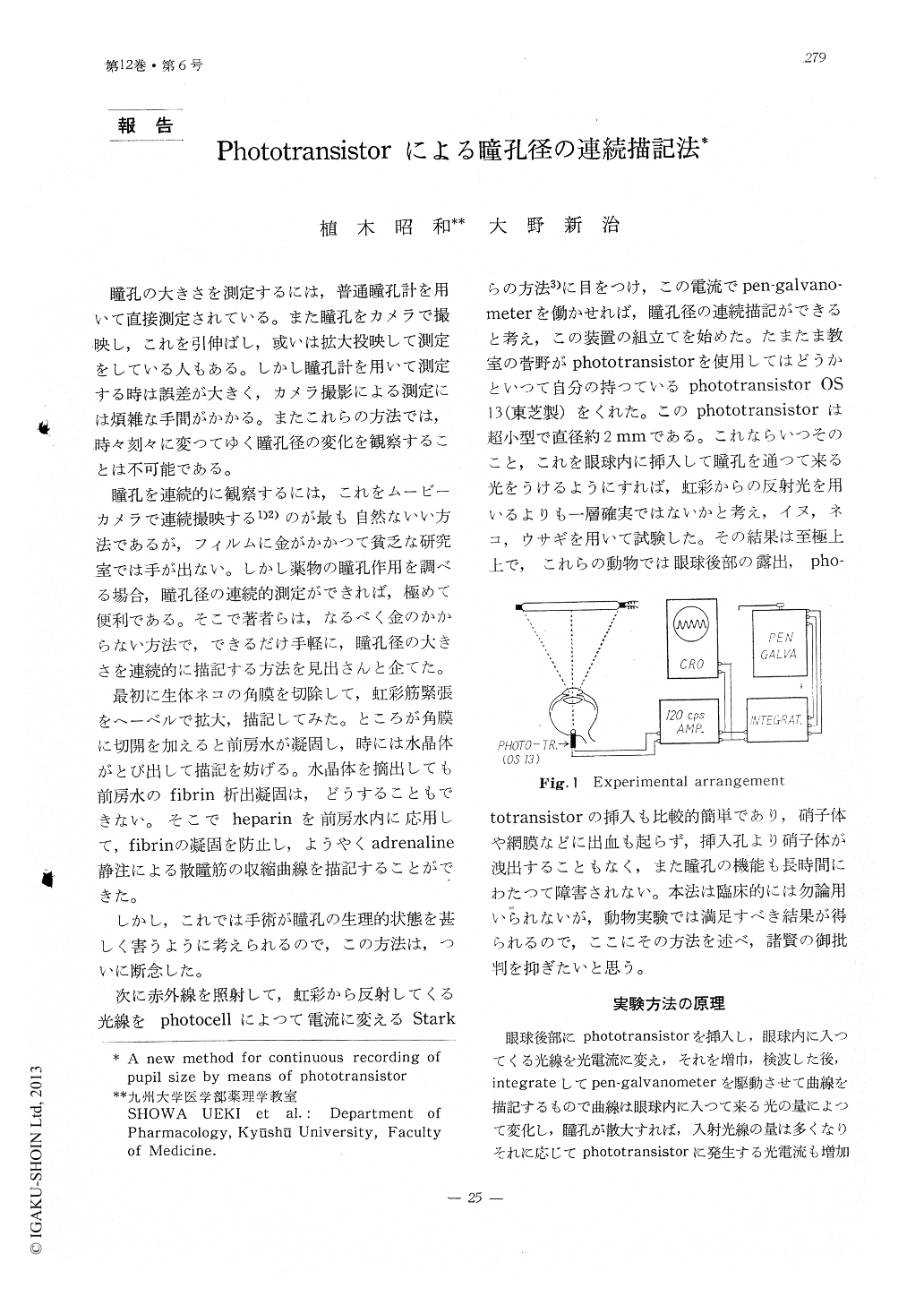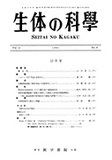Japanese
English
- 有料閲覧
- Abstract 文献概要
- 1ページ目 Look Inside
瞳孔の大きさを測定するには,普通瞳孔計を用いて直接測定されている。また瞳孔をカメラで撮映し,これを引伸ばし,或いは拡大投映して測定をしている人もある。しかし瞳孔計を用いて測定する時は誤差が大きく,カメラ撮影による測定には煩雑な手間がかかる。またこれらの方法では,時々刻々に変つてゆく瞳孔径の変化を観察することは不可能である。
瞳孔を連続的に観察するには,これをムービーカメラで連続撮映する1)2)のが最も自然ないい方法であるが,フィルムに金がかかつて貧乏な研究室では手が出ない。しかし薬物の瞳孔作用を調べる場合,瞳孔径の連続的測定ができれば,極めて便利である。そこで著者らは,なるべく金のかからない方法で,できるだけ手軽に,瞳孔径の大きさを連続的に描記する方法を見出さんと企てた。
Pupillary diameter was continuously recorded in experimental animals such as cats, dogs or rabbits. An extremely small phototransistor (germaium P-N-P alloy junction phototransis-tor OS 13, Toshiba Co.) was inserted in the inside of the eye ball from its posterior pole and directed onto the pupil. A constant red light flux was thrown into the eye through the pupil and incoming light flux generated a photo-electric current in the phototransistor. This current was amplified, detected and integrated, and then was used formore photoel-driving a pen-galvanometer. As the pupil dilated, more light was passed through it and ectric current was generated and accordingly pen deflection wao ienteased It was shown that the relationship between pupillary diameter and pen deflection was almost linear. Therefore, this method would be useful in physiological and pharmacological studies on the pupil. Some of the results, in which the pupiliary responses to various stimuli as well as to the autonomic drugs were recorded by this method, were demonstrated.

Copyright © 1961, THE ICHIRO KANEHARA FOUNDATION. All rights reserved.


